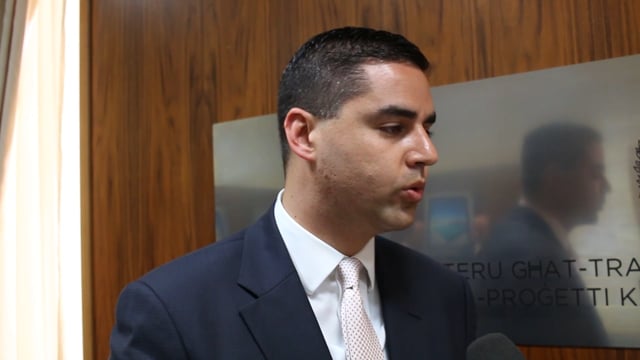[WATCH] Malta-Gozo tunnel: It may be possible to go by car from Manikata to Nadur
A tunnel deep under the seabed will run for 13 kilometres to connect Malta and Gozo • Studies will soon start at proposed tunnel entry points in Manikata and Nadur


The government is committed to going through with the construction of an undersea tunnel between Malta and Gozo, with current study results indicating that its entry point could be in the Manikata area in Malta, and its exit point Nadur in Gozo.
This was announced by Transport Minister Ian Borg today, who said that tunnel coring tests had been underway in Gozo and are at an advanced stage, with more in depth study work on the tunnel’s “portals” - its points of entry and exit - to start shortly.
“We are not just considering this - it is our responsibility to implement a permanent link between Malta and Gozo,” Borg said.
The tunnel would be 13km long, although studies in this regard are not yet concluded, Borg highlighted. It would have one lane in each direction and an emergency lane, with a daily capacity of 6,500 cars per day. The tunnels' corridor would be 500m wide.
The designing of the tunnel is also about the start, with tenders to be issued soon, the minister said.
Borg said that a “design, build, and operate for a number of years” economic model would likely be the best way of having the tunnel built and run, but that it was currently too early in the day to come up with cost estimates for the project.
The environment would be a priority when it came to locating the tunnel portals, he emphasised, and the government was commissioning a detailed Environmental Impact Assessment on entry and exit points, which will be placed in such a way as to have the least possible environmental impact and cause as little disturbance as possible to any existing operations in the locations.

“The area we have in mind in Nadur has already been spoilt, moreover locating the other portal in Manikata would have the added benefit of addressing the current traffic bottleneck at Xemija hill,” he explained.
“The biggest challenge right now is the way we are going to dispose of the waste generated through the tunneling, but the government won’t let this discourage it, and the EIA should also deal with this matter.”
Eivind Grov, a Norwegian expert from scientific research group SINTEF, who is working on the project and has vast experience in tunnels connecting small islands to the mainland, said that a hillside is the ideal location for a portal, making it less costly, smaller and less conspicuous.
“We would certainly avoid locating it on flat land,” Grov said.
In terms of a timeline, in a fictional scenario where a contractor had been chosen and work could start tomorrow, Grov said that it would take around three years for the required 13,000 metre excavation to take place. Once excavation was concluded, installation would require around one to one and a half more years of work, he said.
Tunnel would increase Gozo’s contribution to economy
Former parliamentary secretary Franco Mercieca, who is leading the committee overseeing the project’s implementation, said the tunnel was important on a national level because Gozo currently only gave around a 5% contribution to the Maltese economy, and a permanent link could improve the overall economy of our islands and allow Gozo to have a greater role.
On a local level, the tunnel would be of benefit in addressing the current brain-drain of young Gozitan people who have to leave the island due to a lack of job opportunities, and come to live in Malta, in the process having to choose between career progression and being closer to their families.
“This is a very important step for this large and ambitious project, the biggest ever undertaken in Malta, which would see the first ever sub-sea tunnel constructed in the Mediterranean,” Mercieca said.








.jpg)




.jpg)






.png)


